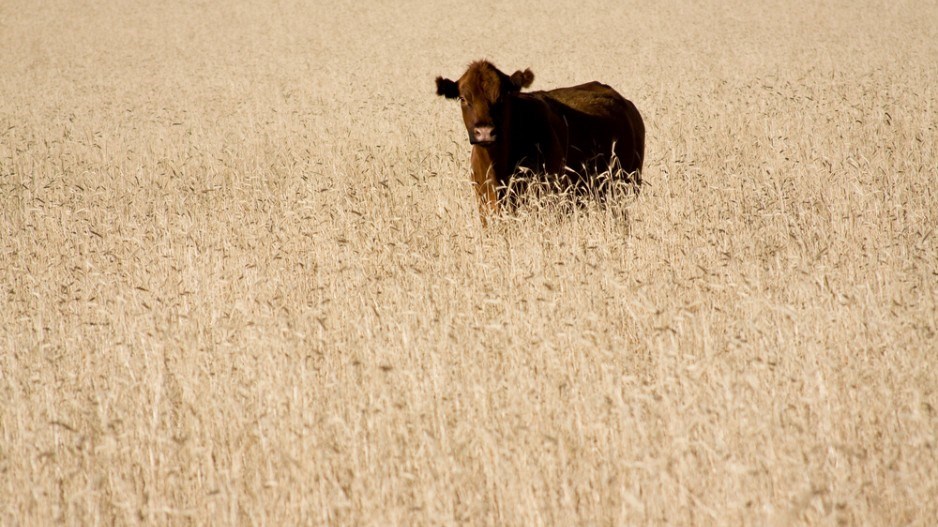Cattle ranchers are facing some hard choices this summer, including the possibility they may have to sell off some of their cattle if drought conditions don’t improve.
“We’re running short of feed now for grazing,” said Kevin Boon, general manager of the B.C. Cattlemen’s Association. “It’s affected the amount of hay and forage for winter feed.”
Conditions are particularly bad in the Cariboo Chilcotin region, but dry conditions are also prevalent for ranchers in the Okanagan and East Kootenay, Boon said.
Added to the pain for farmers, a grasshopper infestation in the Cariboo has also depleted the amount of grass for cattle.
Normally, B.C. cattle producers would buy feed from Alberta or Saskatchewan if hay is scarce, but those provinces have also been hard-hit by the drought and are facing a shortage of feed as well.
“These ranchers will be assessing this as they go forward and make plans. They’re trying to secure winter feed but in some cases, financially it won’t pencil out and they will sell some cows.”
Selling cattle is something farmers want to avoid after years of reducing the size of herds, Boon said. That reduction happened because of the measures taken to control bovine spongiform encephalopathy (BSE), also known as mad cow disease, in the mid-2000s. A drought in 2010 also prompted a sell-off.
“We’ve really shrunk the herd over the past five years,” Boon said. “We’re at the point where we should be growing the herd, the economics are there, and then the drought hit us.”
In response to the drought, the federal government has allowed cattle farmers in B.C., Alberta and Saskatchewan to defer a portion of their taxable income to next year.
Boon said the deferral was a welcome tool, especially if farmers need to sell their cattle and then buy cattle back next year at a higher price because supply will be lower.
@jenstden




